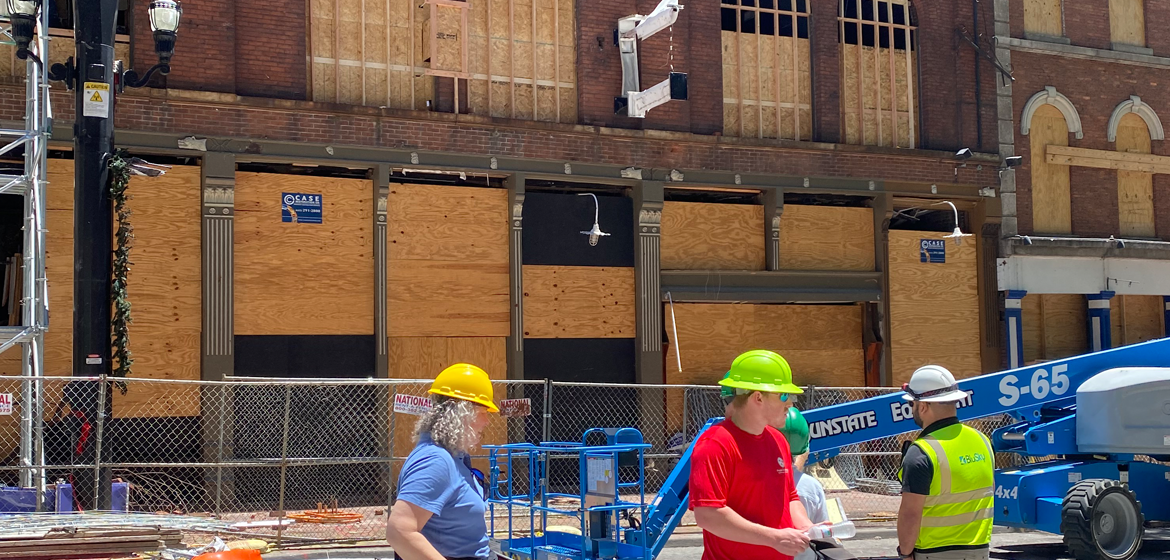Understanding The Importance Of Building Enclosures In Construction

When it comes to constructing a building, the exterior shell, known as the building enclosure, plays a pivotal role in shaping its performance and longevity. Building enclosures serve as the first line of defense against external elements, ensuring structures remain secure, weather-resistant, and energy-efficient. In this article, we will delve into the importance of building enclosures in construction, examining their multifaceted role in safeguarding buildings and providing occupant comfort. From weather protection to energy efficiency, building enclosures are integral to the success of any construction project.
Protection Against Weather
One of the primary functions of a building enclosure is to protect the interior spaces from the effects of weather and the elements. A well-designed and properly constructed enclosure prevents water infiltration, air leakage, and the intrusion of wind, snow, and moisture. Without an effective building enclosure, structures are vulnerable to water damage, rot, mold growth, and structural deterioration.
Weather protection is especially crucial in regions with extreme climates, as it ensures the longevity and durability of a building. A robust enclosure system not only safeguards the building’s structural integrity but also preserves its interior finishes and occupant comfort.
Enhancing Energy Efficiency
Building enclosures play a critical role in enhancing energy efficiency within a structure. They act as a thermal barrier, regulating the flow of heat in and out of the building. Properly insulated enclosures help maintain a stable indoor temperature, reducing the need for excessive heating or cooling and, consequently, lowering energy consumption.
Energy-efficient building enclosures contribute to sustainability and cost savings over the life of the building. They minimize heat loss in the winter and heat gain in the summer, optimizing the building’s overall thermal performance and reducing energy bills for occupants.
Improving Indoor Air Quality and Comfort
The building enclosure also affects indoor air quality and occupant comfort. A well-designed enclosure minimizes drafts, air leakage, and the infiltration of pollutants and allergens from the external environment. This results in improved indoor air quality, creating a healthier and more comfortable living or working environment for occupants.
Furthermore, a properly sealed and insulated building enclosure ensures a consistent indoor temperature, reducing temperature fluctuations and drafts. This promotes occupant comfort and productivity while minimizing the need for frequent adjustments to heating or cooling systems.
Ensuring Durability and Longevity
Building enclosures are instrumental in ensuring the durability and longevity of a structure. They protect the building’s structural components, such as walls, roof, and foundation, from degradation caused by exposure to the elements. Properly designed enclosures can significantly extend the lifespan of a building, reducing maintenance and repair costs over time.
Additionally, a durable building enclosure helps maintain the aesthetic appeal of the structure, preventing the premature deterioration of exterior finishes and cladding. This is particularly important for maintaining property value and curb appeal.
Sustainability and Environmental Impact Aspects
In an era of increased focus on sustainability and environmental responsibility, building enclosures play a vital role in reducing a building’s carbon footprint. Energy-efficient enclosures contribute to lower greenhouse gas emissions by reducing the energy required for heating and cooling. Additionally, materials used in building enclosures can be selected for their eco-friendliness and recyclability.
Sustainable building enclosures also align with green building standards and certifications, making them essential for achieving environmentally friendly and energy-efficient construction practices.
Building enclosures are a cornerstone of modern construction, serving as a multifunctional shield that protects structures, enhances energy efficiency, ensures occupant comfort, and promotes sustainability. Whether you’re planning a new construction project or renovating an existing structure, prioritizing the design and construction of a robust building enclosure is essential for the long-term success and performance of the building.
To ensure your building’s enclosure meets the highest standards of performance and durability, collaborate with experienced architects, engineers, and contractors who specialize in building envelope design. By investing in a well-designed and properly constructed building enclosure, you’ll reap the benefits of enhanced weather protection, energy efficiency, indoor comfort, and sustainability for years to come.
